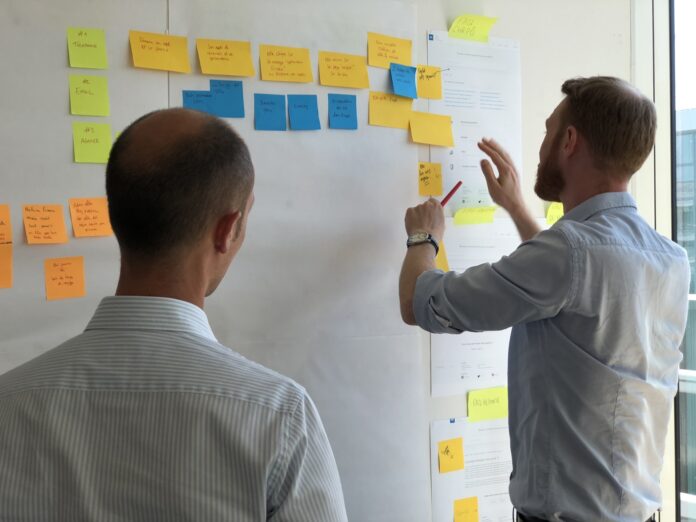Today, there is no universal approach to building a solution. Which approach to choose and what pitfalls to expect?
Before we start, let’s see the selection of a methodology for software development is based on 4 key points:
- Business objectives;
- Scope of work;
- Time;
- Budget.
Choosing the right approach for solution building is highly important. The wrong methodology can negatively affect the whole project. Therefore, before choosing, it is necessary to overview and analyze the peculiarities of each approach.
As experts say, the most popular approaches today are Waterfall and Agile. Supporters of Agile, just like supporters of Waterfall, claim that their method does deliver better software. However, there’s no proof why it is so. They are completely different.
The Waterfall methodology is well-planned and detailed. However, Agile implies flexibility in development with the ability to make changes at every stage of the project. The exact opposite.
In this article, we will compare Agile vs. Waterfall and determine the key features of each. Additionally, you’ll learn the advantages and drawbacks of Waterfall and Agile and figure out which software development methodology is suitable for your given project.
Initially, the Waterfall model of software development presupposes that all the stages of work are sequential. Then, the next stage starts only after the previous one is completed.
Widely-Used Agile Techniques
The most widely-used Agile techniques include:
- Scrum
Scrum is an Agile project development system based on the sprint principle. A working version of the solution is ready in the period from one week to a month;
- Extreme Programming (XP)
In this technique, the interaction with the client is important at every stage. As a result, it becomes easier to identify the defects of the previous stages and determine the required functionality for the solution;
- Lean
This approach is based on the production management system. However, the principle of continuous product improvement at all levels of the process organization differs.
Widely-Used Waterfall Techniques
Widely-used Waterfall techniques include:
- Sashimi is one of the most popular Waterfall models. The stages go one after the other. At the same time, they overlap one another. This allows for starting the design stage during the information collecting. Ultimately, this model adds the flexibility that the Waterfall methodology needs.
- Waterfall with subprojects is a Waterfall method consisting of three major stages. 1. Concept development; 2. Design; 3. Product structuring. Each of these blocks has its development stages. At the end of the work at each stage, they are integrated one into another.
- The risk reduction model allows for dividing a big project into smaller ones. Ultimately, it helps to identify gaps before the software product’s release.
Agile and Waterfall: What to Choose Anyway?
The Waterfall is suitable if:
- The design requirements are carefully thought out and unchanged. In the end, the customer has a clear product concept;
- Technologies and tools are known in advance;
- The developed solution is complex and expensive;
- Product quality is the priority. This means that time and money are of secondary importance;
- The client doesn’t plan to take part in the project implementation. As a result, the project implementation is fully outsourced;
- The contractor software company is ready to take responsibility for the failure to meet the deadlines and budget increases.
Agile is the right choice when:
- The list of requirements is not finally determined. This way, you can introduce changes;
- The project employs an experienced team with a high level of professionalism;
- The client takes an active part in the project implementation process;
- The client needs to make changes as quickly as possible at any stage of work;
- It is necessary to create a working version of a solution in a short time (MVP);
- It is necessary to develop a solution for a flexible business niche.
Ultimately, the key feature of Agile is the creation of a project in several cycles (iterations). Then, each iteration ends and the client sees an interim result and decides on where to move next.
As a result, the process of creating a new solution falls into several cycles. Each lasts for about one week to a month. Depending on project specifics, the client and the development team negotiate the timeframes. Each cycle is a completed mini-project. It includes analysis, planning, testing, and implementation stages.
As a result, the client receives a solution and can adjust it at any time.



